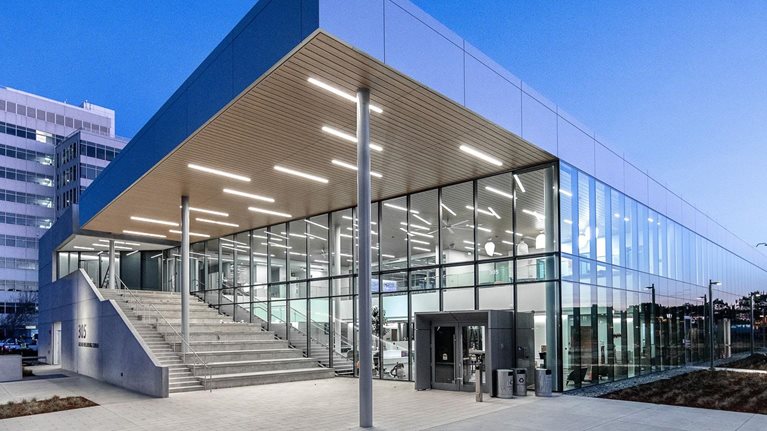Commercial real estate (CRE) has long enjoyed a reputation for being a good hedge against inflation, yet even industry veterans might be hard-pressed to explain exactly why. Has it delivered better real (inflation-adjusted) returns during inflationary periods than at other times? Has it outperformed other asset classes during inflationary periods? With inflation at 40-year highs, we decided to perform a data analysis of CRE’s inflation-hedging attributes. Our goal: a definitive answer to whether CRE deserves its golden reputation and a sense of how it might perform this time around.
The answer to the first question is yes: CRE has helped investors retain real value during periods of heightened inflation. According to McKinsey’s analysis, CRE outperformed inflation, its own historical average, and other asset classes (including stocks, bonds, and gold) during most of the last seven periods of elevated inflation. However, there’s a wrinkle in the data that contradicts accepted wisdom: CRE performed this way despite rents generally not keeping up with inflation.
The principal reason CRE has served well as an inflation hedge1 is that in periods of higher inflation, capitalization rates—effectively, the net operating income (NOI) yield investors are willing to accept—have tended to compress. While interest rates typically rise in periods of inflation, cap rate spreads often narrow. This counterintuitive finding is perhaps partly the result of widespread belief in real estate’s inflation-hedging properties: investors put money into asset classes they believe will protect real value.
Understanding how cap rates have contributed to CRE’s inflation-hedging identity is particularly pertinent to modeling potential outcomes for the asset class today. That’s because currently, amid the fastest monetary tightening on record, cap rate trajectories may differ substantially from those of past inflationary periods. As the macroeconomic panorama evolves, owners contemplating operating, refinancing, or selling existing assets, as well as investors considering new opportunities, can benefit from understanding the following dynamics:
- Historically, CRE has outperformed during inflationary periods since 1980. During each of these periods, although rent growth did not keep up with inflation, cap rate compression contributed to outperformance.
- This time, however, macroeconomic conditions could lead to cap rate expansion, which could erode CRE’s inflation-hedging prowess.
- Building owners may be able to maintain and grow real asset value by considering certain value-creating actions.
Historically, CRE has outperformed during inflationary periods
Following losses induced by the COVID-19 pandemic, CRE returns have partially rebounded along with inflation, despite continued softness in the office market. But real risks could be introduced by persistently high inflation and interest rates, the rising cost and declining availability of debt, and possible economic contraction—all of which may lead to cap rate expansion. To prepare, real estate players can start by arming themselves with a fresh understanding of an old piece of industry wisdom.
During the seven inflationary periods from 1980 to 2022,2 CRE returns, at 11.7 percent annualized, have generally outperformed inflation, their own historical average, and other asset classes, including the S&P 500 and BBB corporate bonds (exhibit). More specifically, CRE outperformed inflation in six of the seven inflationary periods and outperformed its own historical average in five of them. The asset class outperformed stocks in four of the seven periods, and bonds in six of them. Real estate broadly has been a useful hedge against inflation.

In every period, at least one CRE sector—multifamily, office, retail, or industrial—beat inflation. And in six of the seven inflationary periods, the period’s top-performing sector outperformed both stocks and bonds. Picking the right sector based on fundamentals, for those with the foresight to do it, has been a great investment relative to other options in the same time periods.
Historically, even investors that didn’t pick the top-performing sector would have managed to generate real inflation-adjusted returns in most periods. The bottom-performing CRE sector in each inflationary period managed to outperform inflation in six of the seven inflationary periods. The bottom-performing sector also outperformed stocks in four out of seven periods and bonds in five out of seven periods.
Secular trends drove sector outperformance (or underperformance) in each inflationary period. The office sector had standout performances as institutional investment poured into the asset class in the 1980s and again with the dot-com boom in the early 2000s.3 Retail outperformed in the early 2000s as big-box retailers transformed the shopping landscape before brick-and-mortar retail came under pressure from e-commerce in the 2010s.4 Multifamily generated strong returns in the early 2010s as the millennial generation entered the housing market and a shift away from homeownership fueled rental demand.5 For its part, industrial has posted strong returns since the 2010s as the growth of e-commerce has required new-age distribution centers.6
Cap rate compression is the key enabler of CRE outperformance
A common perception is that CRE’s inflation-hedging power comes largely from owners’ ability to raise rents during inflationary periods. One reason for this perception is that CRE leases protect NOI from inflation in several ways. First, both residential and commercial leases typically reset to market level upon expiration. Second, multiyear commercial leases typically require tenants to pay their proportional share of operating expenses and any future increases. Third, on the retail side, many leases tie a portion of rental income to store revenue, allowing rents to grow with inflation in prices of consumer goods.
However, McKinsey’s analysis reveals that rent growth alone (supported by the aforementioned lease characteristics) has not historically provided a full hedge against inflation. Although rents do tend to increase more quickly during inflationary periods, those increases rarely match the pace of rising inflation point for point. Annualized CRE rent growth averaged only about 3 percent during the seven inflationary periods studied, compared with average annualized inflation of almost 5 percent. Thus, real rents fell.
If rents typically fall behind inflation, then how can CRE deserve its inflation-hedging notoriety? The key factor is cap rate compression, which averaged roughly 20 basis points annually during the periods studied, contributing significantly to total returns. Although the four primary CRE sectors—office, industrial, retail, and multifamily—and their subcategories serve distinctive purposes in the economy and behave differently in many ways, all sectors have reacted similarly to periods of high inflation: cap rates compressed, and rents rose nominally (but not in real, or inflation-adjusted, terms).
Macroeconomic conditions could make this time different
Performance throughout much of the current inflationary period has fit the historical pattern. Elevated CRE returns have been accompanied by overall rents growing at a rate lower than inflation—higher in multifamily and industrial, lower in retail and office. And until recently, cap rates dipped to all-time lows. However, the macroeconomic environment is diverging from the patterns observed in the last seven inflationary periods in ways that could lead to cap rate expansion. Such a scenario could undermine CRE’s ability to hedge inflation this time around, and indeed, in recent quarters, CRE returns have fallen.
One notable difference is that six of the previous inflationary periods analyzed occurred during a roughly 40-year period of gradually declining interest rates.7 Today, amid monetary tightening that occurred at unprecedented speed,8 the cost of debt is rising, and its availability is declining. The vacancy rate—particularly in the office market—is another headwind for investors.9 And an elevated chance of recession may contribute to risk aversion.
It could therefore take some time to arrive at the right economic conditions for a return of cap rate compression—which is, after all, a measure of risk tolerance. With the benefit of falling cap rates in question, building owners will need to work harder to maintain and grow the value of their real asset.
Building owners can consider actions to maintain and grow real asset value
In the recent past, real estate players could be fairly confident that well-located buildings, whether residential or commercial, would provide solid returns. Today, CRE must do more to attract and retain quality tenants amid pandemic-era changes in how people work and live. Persistent high inflation adds even more pressure to manage building operations and leasing optimally and to acquire, refinance, and execute dispositions strategically. In today’s macroeconomic environment, it may be wise for owners to consider the following actions.
Focus on leaner operating costs
Investment models should be sensitized to the possibility of persistent inflation and elevated rates. Asset managers can benefit from reworking NOI optimization models to account for higher operating costs. Likewise, property return models can be updated to incorporate a potentially long-term increase in financing costs.
Directing capital expenditures to areas that reduce operating costs is always important but is particularly so during inflationary periods. Some investments, such as in energy-efficient windows and HVAC controls, also can help achieve emission reduction targets for buildings and tenants.
Improve tenant experience
In the absence of intervention, real rents fall during inflationary periods. To earn the ability to maintain real rents, smart operators will focus on the features that tenants value most. These might include on-premises meeting spaces in Class A office buildings, which could support tenants’ flexible work strategies. In apartment communities, busy professionals may willingly pay a premium for amenities such as car charging, dry cleaning, and dog walking.
Acquire, develop, and sell properties with inflation in mind
Inflation should be a factor in decisions related to acquisitions, property development, and dispositions. Owner-operators may benefit from focusing on acquisition and development opportunities in a specific geographic area, so they can build market scale and leverage operating cost efficiencies. Similarly, they could consider selective dispositions of assets in markets that do not support scale.
The conventional wisdom that CRE is a good hedge against inflation is borne out by historical data. But because this hedge is an outcome of cap rate compression, real estate investors—current and future—are wise to consider actions tailored to today’s macroeconomic reality. As costs rise throughout the economy, especially for labor and materials, controlling operating expenses is a key to NOI (even if some cost increases are passed through to tenants) because rent increases tend to lag behind inflation. Knowing how macroeconomic forces have historically affected the sector is important, but there’s no substitute for taking preemptive action.


